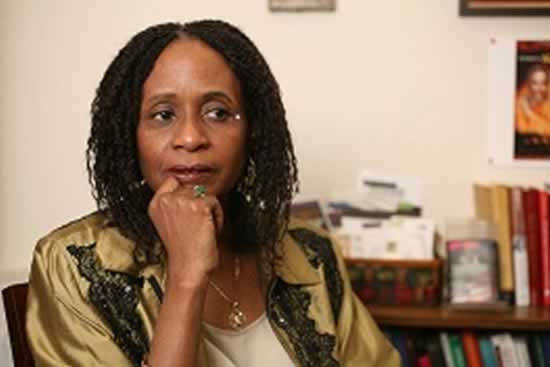Dr. Brenda Greene Delivers Son’s Remarks at New York Historical Society Event
By Lydia Liebman

Dr. Brenda Greene
This fall, The New York Historical Society hosted a special preview for its new exhibit “Black Citizenship in the Age of Jim Crow”. This is the inaugural exhibition for the New York Historical Society’s newest initiative, which is dedicated to telling the story of struggle for freedom, civil rights, and equality in America. The exhibition explores the struggle for full citizenship and racial equality that unfolded in the 50 years after the Civil War.
The keynote speaker was Dr. Brenda Greene, who delivered the remarks written by her son, Jamal Greene. Dr. Brenda Greene is the Founder and Executive Director of the Center for Black Literature, Director of National Black Writer’s Conference and Chair of the English Department at Medgar Evers College. In addition to her myriad accomplishments, she is the mother of two famous men: the rapper and activist Talib Kweli and Jamal Greene, Dwight Professor of Law at Columbia University. Jamal Greene was unable to deliver his keynote remarks in person because he was in Washington D.C. assisting Senator Kamala Harris during the high profile Brett Kavanaugh Senate hearings.
Dr. Greene delivered some words of her own before presenting those of her sons. “This exhibit is extremely important in this time when the voting rights of people of color are under attack and being eroded … when the rights of immigrants are being violated, when the rights of those who were formerly incarcerated are eroded, and the rights of naturalized citizens are being questions,” she said. She also praised the New York Historical Society for raising awareness of social justice and civil rights issues through their exhibits over the years.
She then went on to delivery her son’s remarks. Mr. Greene’s thoughtful words covered a lot of ground. He praised his mother, who he called his “bridge” to the exhibit. He went on to discuss his late grandmother, Beverly Moorehead, who recently passed away. “I mention my grandmother because this exhibit is about memory. It is about what we remember, and how we remember and who we remember.” His remarks went on to discuss the constitution and how the story of the U.S. Constitution is “a deeply racialized story” due to the many explicit bargains the Constitution made with slavery. His remarks read:
Many of you are aware of the explicit bargains the Constitution made with slavery, or as it was often euphemistically called, “the peculiar institution.” The Fugitive Slave Clause, which promised that escaped slaves could be recaptured. The continuation of the trans-Atlantic slave trade for another 20 years after ratification of the Constitution. The so-called three-fifths compromise, which unnaturally increased the basis for political representation in southern states. That compromise affected not only the composition of the House of Representatives but also the composition of the Electoral College. That in turn affected the presidency. With just two exceptions, every one of the fifteen U.S. presidents from the founding of the nation until Lincoln was either a slaveowner or was openly sympathetic to the interests of slaveholders. The two exceptions were John Adams, who served just one term, and John Quincy Adams, who also served only one term and who did not actually receive the most electoral votes in the election he won.
The Civil War was of course fought over the maintenance and expansion of slavery. Full stop. And the constitutional changes that emerged from the Civil War are what we honor when we celebrate this year the 150th anniversary of the Fourteenth Amendment, the jewel of the Reconstruction Amendments.
The constitution, he explained, is grounded in the promise of the Fourteenth Amendment and the other Reconstruction amendments. He went on to tell an anecdote about a time he visited Cadiz, Ohio, where John Bingham, primary author of the Fourteenth Amendment, grew up. “But when you talk to the folks at the tiny historical society office a block from the Cadiz courthouse about the statue, they groan that tourists always think it’s a statue of Clark Gable. You see, “The King of Hollywood” was born and grew up in Cadiz. Gable is the one whose birthplace tourists come to Cadiz to see,” he said. The reason many people do not remember Bingham is because of the Lost Cause narrative. This narrative, in a sense, rewrites history by painting the Confederate cause as a heroic one against great odds despite its defeat. The movement, Jamal said, was successful in shaping and distorting collective memory of the Reconstruction. In his words, this exhibit recovers the struggle and recaptures the nobility of a people too easily forgotten. The exhibition runs through March, 2019 and is not to be missed. #
